Fruit from Florida's early maturing peach, nectarine, and Japanese plum cultivars mature in April and May. However, after the fruit is harvested, trees grow vigorously until about November. Trees must therefore be pruned annually to enhance tree growth, reduce fruit thinning costs, and adjust crop load for the following season. During the first two to three years after planting, young trees are trained to develop a branching system or tree canopy that will later support a well distributed crop. Mature, producing trees from about three to ten years of age are usually pruned when dormant (December to February) and during the late spring and summer (May to August). Although each tree will grow differently with few trees being perfectly symmetrical, the overall goal for peaches and nectarines is to develop an open center or vase-shaped tree with a spreading but upright growth habit (Figure 1) and to train Japanese plums that would typically grow very upright to a somewhat spreading pattern (Figure 2). Written for both homeowners and commercial growers, this publication explains concepts underlying recommended tree training and pruning practices.
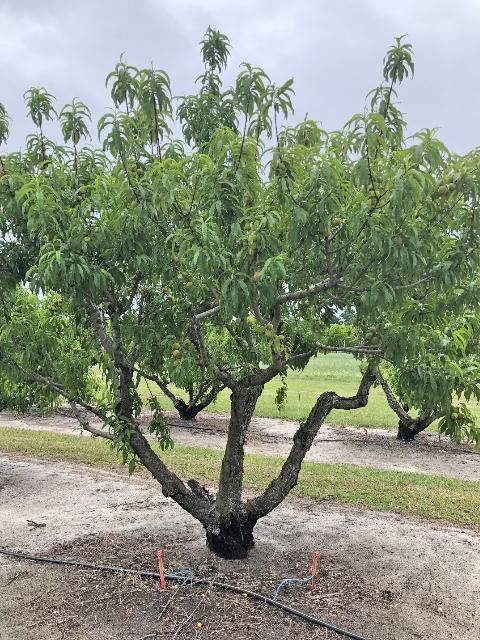
Credit: A. Sarkhosh, UF/IFAS
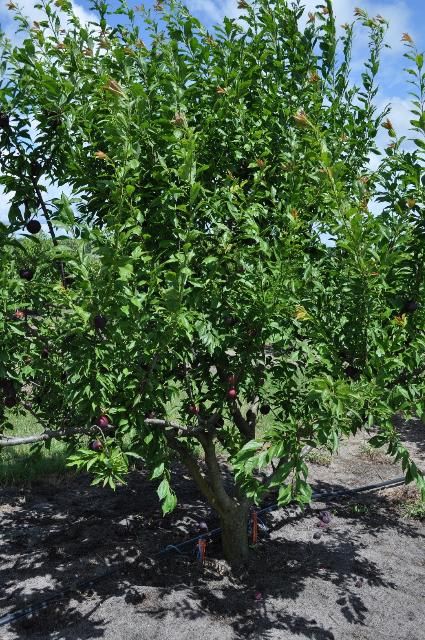
Credit: M. Olmstead, UF/IFAS
Planting and Training Young Trees
Planting
Florida stone fruit (peaches, nectarines, and plums) are usually budded onto peach rootstock in May and June and sold as dormant nursery trees for planting the following December to January. Bare root trees grown in field nurseries are harvested during the winter months and should be planted as soon as possible to prevent roots from drying out. When bare root trees are wrapped in moist sphagnum moss and tightly wrapped in black plastic and tied well, they can also be stored temporarily in coolers maintained at about 32°F until planted. Nurseries are now also producing stone fruit trees in containers, enabling growers and homeowners to plant stone fruit trees year round. Containerized trees may become root bound, so be sure to loosen the root ball by removing some soil and roots before planting to improve contact of roots with soil and stimulate new root growth (Figure 3).
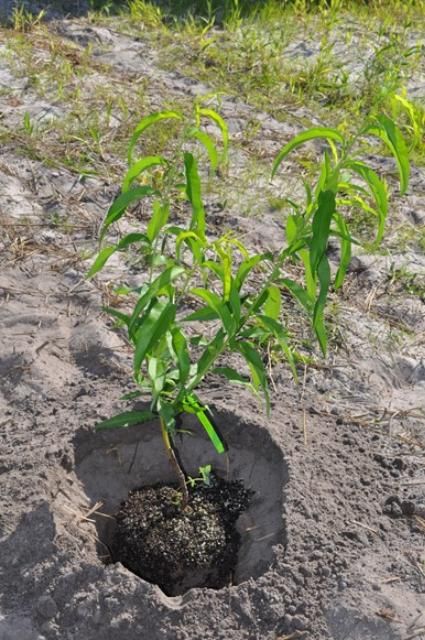
Credit: M. Olmstead, UF/IFAS
Dormant trees, bare root or containerized, planted in the winter can establish root systems early in the year and usually grow better than trees planted later that year. Although dormant trees do not have high water demands, watering trees at planting will keep roots moist. Note that red-leafed 'Flordaguard' peach rootstock with improved nematode resistance is the only stone fruit rootstock recommended by the University of Florida.
Pruning at Planting
Nursery trees with trunks less than 3/8 inch in diameter usually have no lateral branches and can be cut back 18 to 24 inches above ground level. Primary or scaffold branches will develop six to ten inches below this cut. These scaffold branches need to be developed low to make pruning, thinning, and fruit harvesting operations easily accessible from the ground or scaffold branches high enough to allow for management practices like weed management, fertilization, and irrigation line maintenance. Nursery trees with greater than a 1/2 inch diameter may have already developed lateral branches. Using pruning shears, remove most of these branches, leaving three to five branches that are evenly spaced in a north, south, east, and west direction. Depending on the length and vigor of the remaining lateral branches, cut them back two to three inches or closer to the trunk to stimulate vigorous lateral growth. During the first spring and summer, trees should be managed to produce as much vegetative growth as possible, with major pruning left to the winter months when the trees are dormant. However, new plantings can be pruned lightly during the summer without reducing leaf surface area much. Some growers pinch off undesirable branches and remove vigorous branches that may divert growth away from the scaffold branches. During the second and third summers, undesirable branches can be pruned from peaches and nectarines, and excessive growth from the top of plum trees topped or cut.
First Year Dormant Pruning
By the end of the first year, a number of potentially primary or scaffold branches will have grown on peaches and nectarines. During the first year dormant pruning, the task is to select branches that will develop into the main structural branches for a tree with an open center or vase shape (Figure 4).
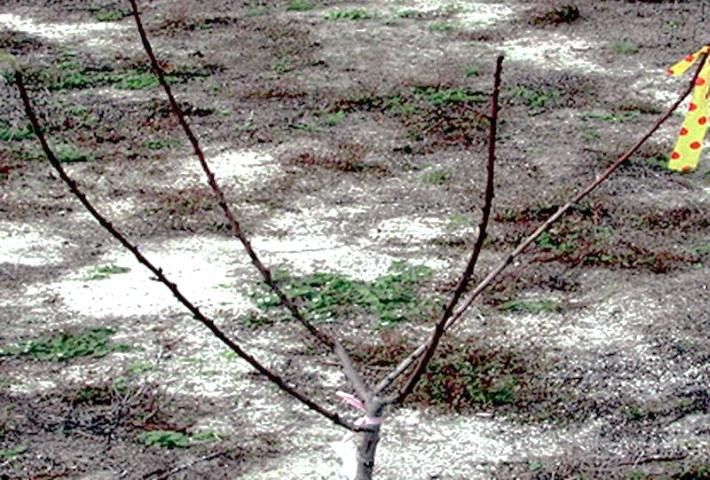
Credit: UF/IFAS
If this has not been done already, select three to four limbs evenly spaced around the trunk at about a 45-degrees angle from the trunk and about six inches apart vertically. Prune back these branches two to three feet from the crotch of the tree, the areas from which the scaffold branches emerged.
Leave small shoots along these branches to provide sunburn protection for the scaffold limbs and to possibly produce early fruit. Remove excessively vigorous branches that could interfere with the growth of the scaffold branches.
Plums tend to grow more upright than peaches and nectarines and branch more densely, requiring a different pruning strategy. Florida plums can be grown with either an open center or with a modified central leader system. Select exterior branches that grow laterally and remove most interior branches. Spreader sticks and branch weights are sometimes used to widen branch angles of plum scaffold branches. Another approach requires pruning all branches to about twelve inches from the trunk, with subsequent dense growth naturally forcing some exterior branches to grow laterally. Dense interior branches can be removed later.
Second Year and Later Dormant Pruning
During the second dormant season for peaches and nectarines select two to three vigorous lateral branches growing outward from each of the primary scaffold branches. Avoid selecting lateral branches situated on top of each other. Remove other branches and cut back the secondary lateral branches about 20 to 36 inches from the primary scaffold branches. Leave some small branches and twigs, especially on the north and east side of the tree, to provide some shade for the scaffold branches (Figure 5).
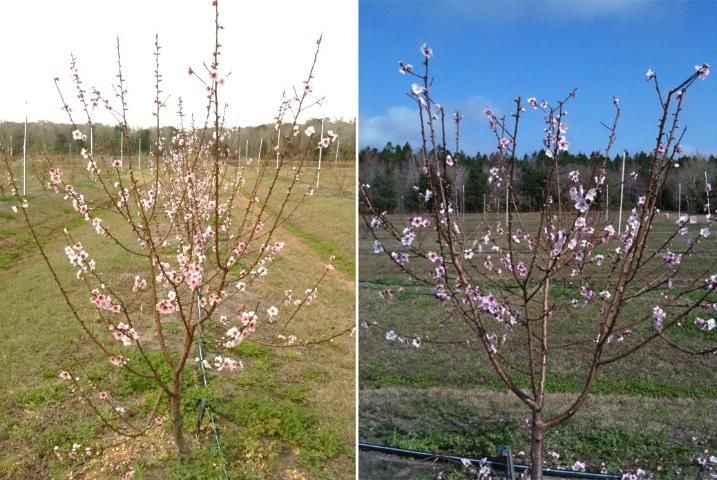
Credit: M. Olmstead, UF/IFAS
The same basic pruning methods are used in the third and fourth dormant seasons as peaches and nectarines are pruned to an upright but lateral canopy with an open center having three to four primary scaffold limbs branching out to five or six secondary branches and smaller twigs four to five feet above ground (Figures 6). Maintaining an open center in this way will allow light penetration throughout the canopy to stimulate the production of new fruiting wood, improve fruit quality, and enable workers to pick fruit without ladders. Summer pruning mature trees can open the canopy to light and improve tree vigor and fruit quality. When summer pruning, leave some leafy twigs to prevent sunburn on the scaffold limbs. These twigs can be removed later to restrict their vertical growth (Figures 7 and 8). Cutting back the tree at manageable, the height of 6-8 feet, can be done either by had pruner or disc pruning or cutter bars machines (Figures 9).
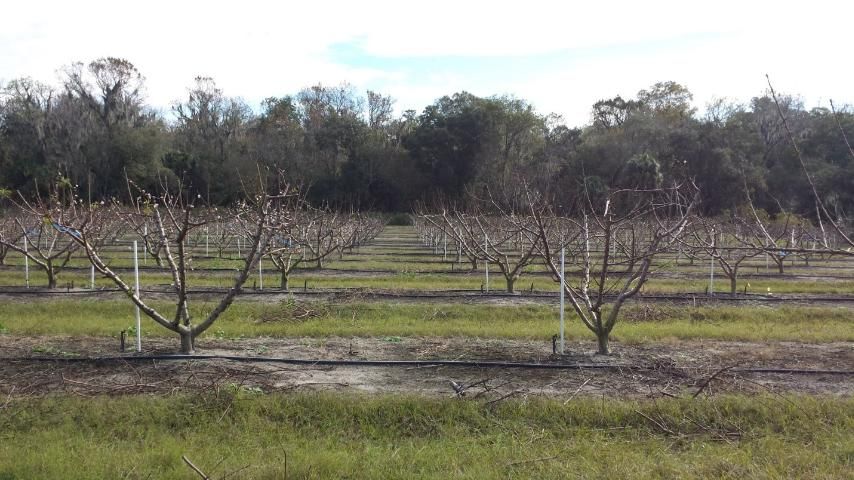
Credit: C. Zambrano
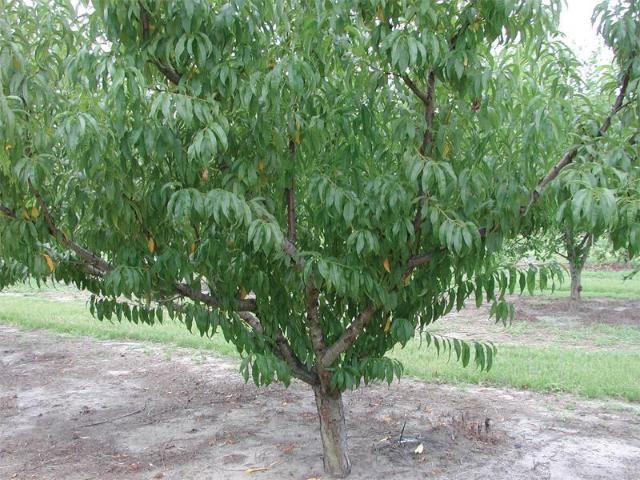
Credit: UF/IFAS
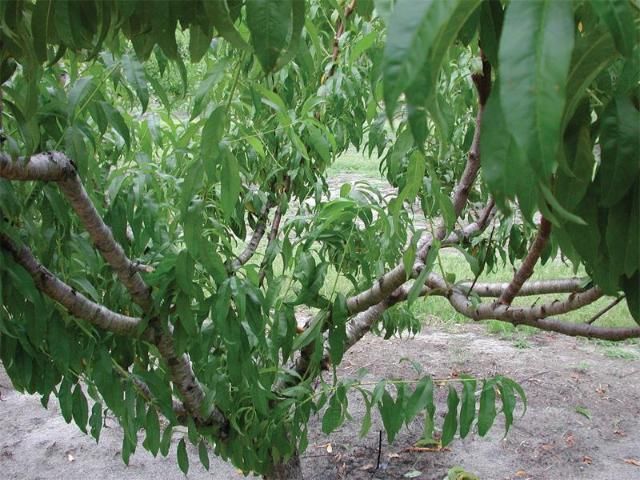
Credit: UF/IFAS
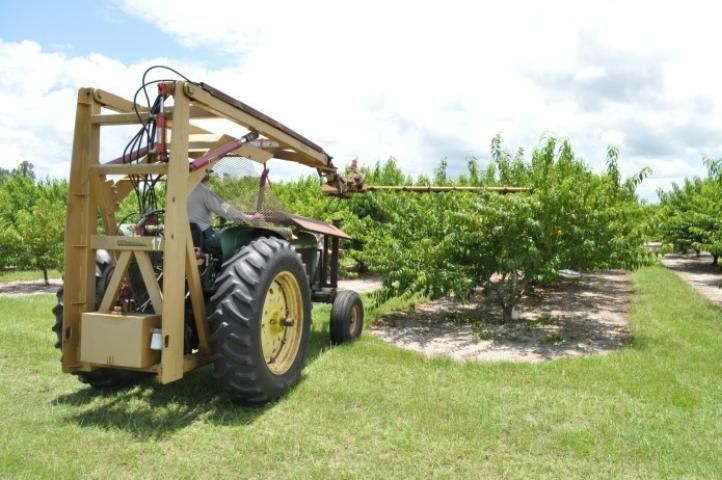
Credit: D. Huff
Other tree training systems like the perpendicular V, with one scaffold limb perpendicular to the row, have been used in other states. In Georgia, perpendicular V systems planted at a 6- to 8 feet in-row spacing and 20 feet between rows (363 to 272 trees per acre) produce higher yields per acre earlier than open center trees planted at a 20 x 20 feet spacing. However, at maturity yields for trees planted in the perpendicular V system were similar to yields for open center trees at a conventional spacing.
When dormant pruning, open access to the interior canopy for fruit thinning later latter in the season need to be considered during the pruning cuts. Note that plums grown in Florida develop such densely branching canopies that the interior of the tree must also be dormant pruned to allow light penetration.
Vertical growth for Florida stone fruit trees should not exceed seven to eight feet to allow easy harvest from pickers working from the ground without ladders. When trees are planted on single or double row beds in flatwoods soils, tree height should be lower to facilitate fruit harvest for pickers harvesting fruit from the sloping side of the bed or the ditch or swale side of the tree. When large branches are removed, make a cut about 1/2 inch from the trunk or limb from which the pruned branch is removed. To avoid splitting the bark, undercut the branch about 1/3 of the way and finish the cut from the top.
Piles of pruned wood left in the orchard can harbor pests and plant pathogens and should be removed from the orchard (Figure 10).
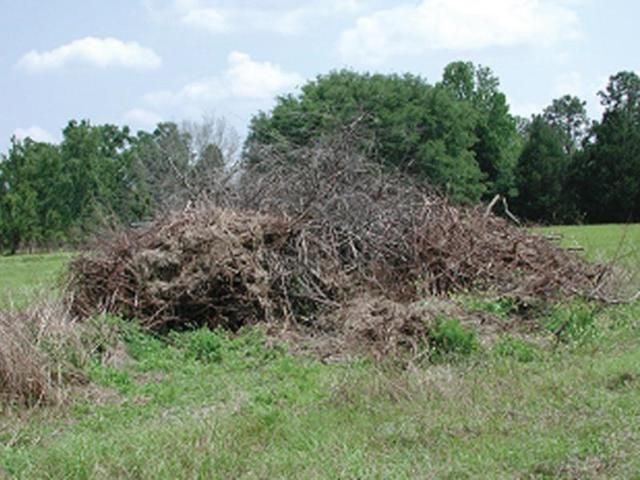
Credit: UF/IFAS
Time of Pruning
Tree condition, cultivar, geographic location, and history of past spring freezes should be considered when determining the best time for pruning. Stone fruit trees must drop their leaves before they enter dormancy. Given our variable weather during November and December, trees in some areas, mainly south-central Florida, will retain their leaves. Growers commonly spray zinc sulfate during this time to defoliate trees. Zinc sulfate is "hot" enough to cause leaf drop and can also add zinc to the soil. Defoliating trees in early November winter can ensure that dormant oil sprays for scale control can penetrate branch crotches and other protected areas where scales overwinter. It is also easier to see where trees should be pruned.
When training young trees, consider that pruning cuts will affect later canopy development, so do not make drastic cuts. Maintaining an open center for mature trees allows more leeway in making pruning decisions. When growing cultivars with a range of chilling hours, prune the lowest chilling cultivars first because they will break dormancy earlier than higher chill cultivars.
Although dormant pruning has advantages, growers in more northern areas without freeze protection sometimes wait until the middle of March to prune, even though trees may be in full bloom (Figure 11).
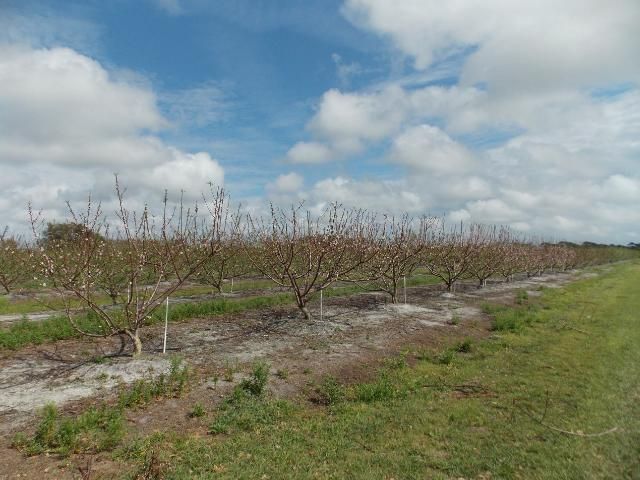
Credit: Ali Sarkhosh, UF/IFAS
Relationship of Pruning to Fruit Production
eaches and nectarines bear fruit in the spring on one-year-old wood (wood grown during the previous spring, summer, and fall). Japanese plums bear fruit primarily on lateral branches or spurs that are two years old or older and secondarily on one-year-old wood like peaches and nectarines. These differences in fruit bearing patterns affect pruning practices. For example, peaches and nectarines should be dormant pruned to position new fruiting wood within the canopy and around the outer perimeter of the tree.
In California where fresh plums are grown on 40,000 acres in 2006, most but not all new spur growth is usually removed during dormant pruning; 20% to 40% of spurs older than one year are left to produce crops the following spring; and less productive spurs older than three to four years are removed. In this way, fruiting wood can be renewed annually to maintain production (Figure 12).
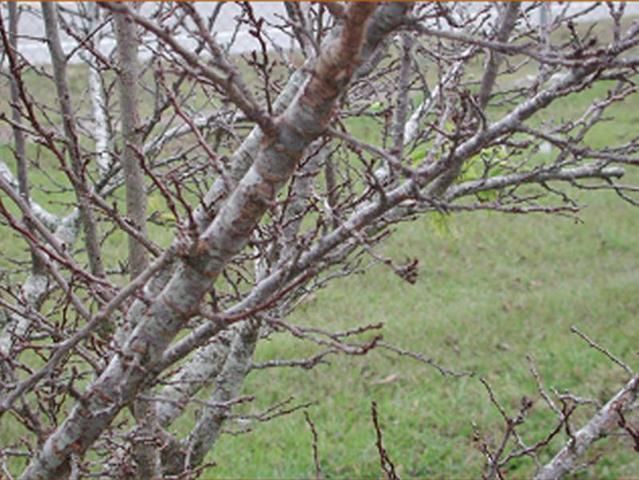
Credit: UF/IFAS
Keynotes in Subtropical Stone Fruit Pruning and Training
-
Always keep the tree to a manageable height by topping or cutting off (recommend to be done in summer pruning by disc pruner).
-
Old fruiting branches should not allow to be developed inside the tree canopy.
-
Always remove old fruit and dead shoots.
-
Always remove strong water shoot grown inside the canopy, If not required as replacement wood, weak water shoot can be kept to reduce the limb sunburn.
-
Always remove all the growth including suckers within 20 inches of the ground.
-
Always remove the secondary laterals that are competing with the scaffold.
-
To eliminate some flower buds remove some laterals or tip lateral over 15 inches by cutting them off about 1/3.